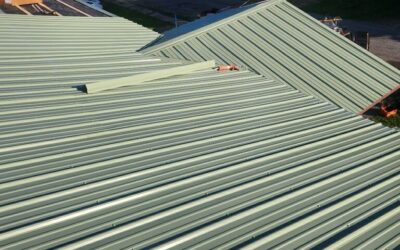


iturn0image0turn0image1turn0image2turn0image4What Are Shingles Made Of? Understanding the Composition of Asphalt Roofing Shingles
Asphalt shingles are among the most commonly used roofing materials in the United States, known for their affordability, durability, and ease of installation. But have you ever wondered what exactly makes up these shingles that protect your home from the elements? In this comprehensive guide, we’ll delve into the materials that constitute asphalt shingles, their manufacturing process, and how these components contribute to the shingles’ performance and longevity.
1. Fiberglass Mat
At the core of most modern asphalt shingles is a fiberglass mat. This mat serves as the structural foundation, providing strength and flexibility to the shingle. Fiberglass mats are made from woven strands of glass fibers bonded together with resin, resulting in a lightweight yet robust base. The use of fiberglass mats has largely replaced the older organic mats made from paper or wood fibers, offering improved fire resistance and durability. citeturn0search10
2. Asphalt Coating
The fiberglass mat is then coated with a layer of asphalt. This asphalt serves multiple purposes:
- Waterproofing: It prevents water from penetrating the shingle, protecting the underlying roof deck.
- Adhesion: It helps bond the granules to the shingle surface.
- Durability: It enhances the shingle’s resistance to weathering and UV degradation.
The asphalt used is often modified with polymers to improve its performance, making the shingles more flexible and resistant to cracking. citeturn0search10
3. Mineral Granules
The top surface of asphalt shingles is embedded with mineral granules. These granules serve several functions:
- UV Protection: They shield the asphalt from the sun’s ultraviolet rays, which can degrade the material over time.
- Aesthetic Appeal: Granules come in various colors and textures, allowing homeowners to choose shingles that complement their home’s exterior.
- Fire Resistance: Certain granules can enhance the shingle’s fire rating.
- Algae Resistance: Some granules are infused with copper or other agents to prevent algae growth, which can cause discoloration. citeturn0search10
4. Sealant Strips
On the underside of shingles, you’ll find self-sealing strips. These strips are made from a combination of asphalt and other materials, designed to bond shingles together once installed. This bonding helps prevent the shingles from lifting due to wind uplift, enhancing the roof’s resistance to high winds. citeturn0search10
5. Release Film
To prevent shingles from sticking together during storage and transport, a release film is applied to the self-sealing strips. This film is typically made from a thin layer of plastic or other materials that can be easily removed during installation. Once the shingles are in place, the release film is discarded, and the self-sealing strips perform their function. citeturn0search0
Types of Asphalt Shingles
Asphalt shingles come in various styles and compositions, catering to different aesthetic preferences and performance requirements:
1. Three-Tab Shingles
These are the traditional, flat shingles with a uniform cut. They are lightweight and cost-effective, making them a popular choice for budget-conscious homeowners. However, they have a shorter lifespan compared to other types. citeturn0search10
2. Architectural Shingles
Also known as dimensional or laminated shingles, architectural shingles have a multi-layered construction that provides a more textured and dimensional appearance. They are thicker and more durable than three-tab shingles, offering better resistance to weather elements and a longer lifespan. citeturn0search10
3. Composite Shingles
These shingles are made from a blend of materials, including asphalt, fiberglass, and other components. They aim to combine the benefits of different materials, offering enhanced durability, energy efficiency, and aesthetic appeal. citeturn0search6
Environmental Considerations
Asphalt shingles are a significant component of roofing materials used in the U.S., but they also contribute to landfill waste. Innovations in recycling have led to the development of shingles made with recycled materials. For instance, GAF, a leading roofing manufacturer, has introduced shingles containing 15% recycled content, aiming to reduce the environmental impact of roofing materials. citeturn0news31
Conclusion
Understanding the materials that make up asphalt shingles can help homeowners make informed decisions when selecting roofing materials. The combination of fiberglass mats, asphalt coatings, mineral granules, and other components work together to provide a roofing solution that is both functional and aesthetically pleasing. Whether you’re building a new home or replacing an old roof, knowing what your shingles are made of ensures that you choose the best option for your needs.
 (440) 307-2060
(440) 307-2060

